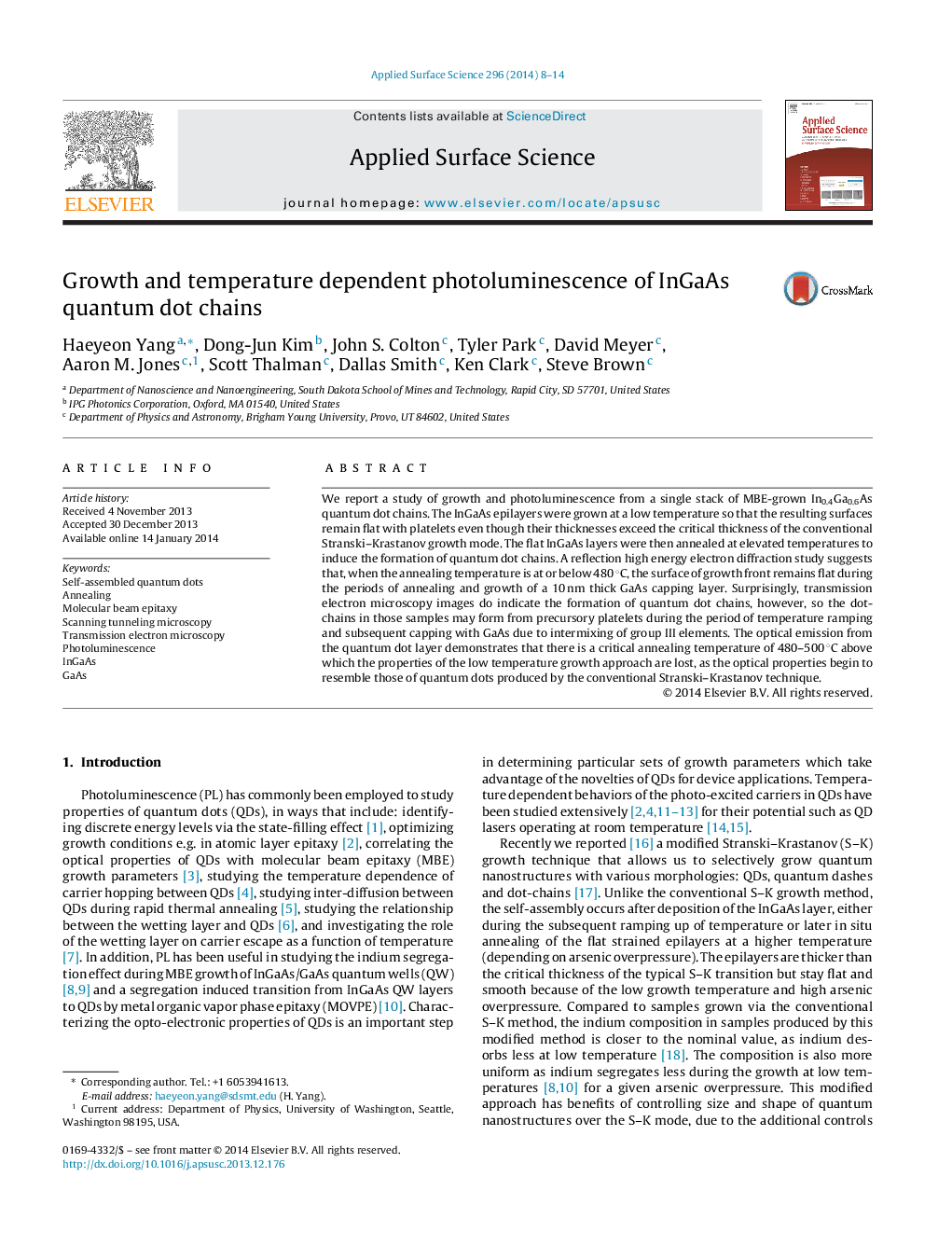| Article ID | Journal | Published Year | Pages | File Type |
|---|---|---|---|---|
| 5359561 | Applied Surface Science | 2014 | 7 Pages |
Abstract
We report a study of growth and photoluminescence from a single stack of MBE-grown In0.4Ga0.6As quantum dot chains. The InGaAs epilayers were grown at a low temperature so that the resulting surfaces remain flat with platelets even though their thicknesses exceed the critical thickness of the conventional Stranski-Krastanov growth mode. The flat InGaAs layers were then annealed at elevated temperatures to induce the formation of quantum dot chains. A reflection high energy electron diffraction study suggests that, when the annealing temperature is at or below 480 °C, the surface of growth front remains flat during the periods of annealing and growth of a 10 nm thick GaAs capping layer. Surprisingly, transmission electron microscopy images do indicate the formation of quantum dot chains, however, so the dot-chains in those samples may form from precursory platelets during the period of temperature ramping and subsequent capping with GaAs due to intermixing of group III elements. The optical emission from the quantum dot layer demonstrates that there is a critical annealing temperature of 480-500 °C above which the properties of the low temperature growth approach are lost, as the optical properties begin to resemble those of quantum dots produced by the conventional Stranski-Krastanov technique.
Keywords
Related Topics
Physical Sciences and Engineering
Chemistry
Physical and Theoretical Chemistry
Authors
Haeyeon Yang, Dong-Jun Kim, John S. Colton, Tyler Park, David Meyer, Aaron M. Jones, Scott Thalman, Dallas Smith, Ken Clark, Steve Brown,
